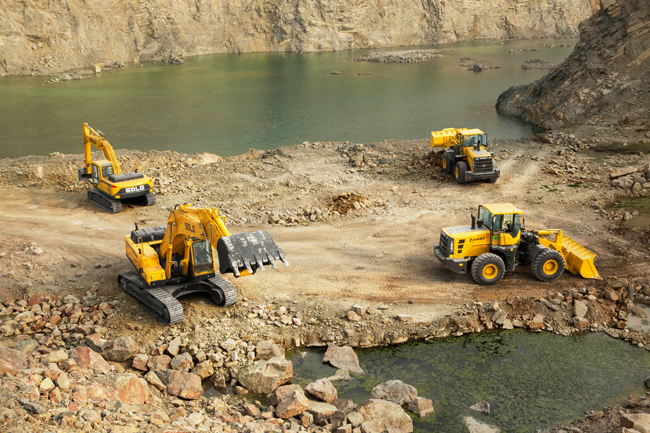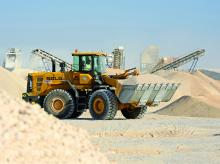
The Chinese construction and quarrying original equipment manufacturer (OEM), part owned by the
A spokesperson for SDLG, headquartered in Linyi, Shandong Province, said: “Equipment buyers should consider the availability and accessibility of service and parts support when purchasing a machine for infrastructure work. SDLG’s extensive network of dealers throughout Asia Pacific ensures that equipment needs for any project within the region — a critical part of the Belt and Road Initiative (BRI) — can be swiftly met. Indonesia, Malaysia, Cambodia, Vietnam, and India, all of which are part of vital international economic cooperation corridors that form BRI, are some countries where the use of SDLG machines is well documented and where dealer networks are well-established and trained to provide necessary support.
“Machine reliability is important to prevent disruption to project timelines and is dependent on time-tested technology and engineering. The ability of a machine to withstand the tough job site conditions on infrastructure projects is central to its reliability, and SDLG wheeled loaders, for example, undergo up to 200,000 fatigue tests to ensure they can stand up to the rigors. Also, SDLG minimises electronic machine features, which can corrode or break, thus increasing costs on infrastructure projects.”
The SDLG spokesperson said operating costs are a key consideration when choosing a machine for any infrastructure project. A machine’s maintenance and repair costs over its lifetime form part of its operating costs, and the two combined can run “as high as 75% of its purchase price”.
The spokesperson continued: “By purchasing ‘value’ SDLG equipment, which features simple, easy-to-maintain technology, contractors can keep operating costs low through the protection of strong warranties and access to a network of capable dealers. Also, companies are not paying for features they don't need when completing infrastructure projects.
The SDLG spokesperson notes that the more sophisticated a machine is in terms of technology and build, the more time it takes to train operators and for the machine to be deployed on projects. The spokesperson also says machine sophistication can also decrease efficiency in initial operations due to unfamiliarity with the equipment.
“Considering most infrastructure work relies on traditional high-cycle and heavy-duty construction methods, a simple machine enables operators to quickly get up to speed with tasks onsite, enabling them to meet deadlines and keep projects on schedule and on budget. On many infrastructure projects, the timing of a project’s completion can mean the difference between bonuses or penalties.”
Of the importance of machine availability to infrastructure project contractors, the SDLG spokesperson said: “Some BRI projects are massive, and many are rolling out quickly. The time between winning a project and beginning work can often be tight, so contractors must quickly obtain large quantities of equipment and get operators up to working speed. SDLG’s factory in China can produce up to 50,000 wheeled loaders per year, often fulfilling orders that require hundreds or thousands of machines on very tight timetables, making it one of the world’s most prolific equipment makers.”








